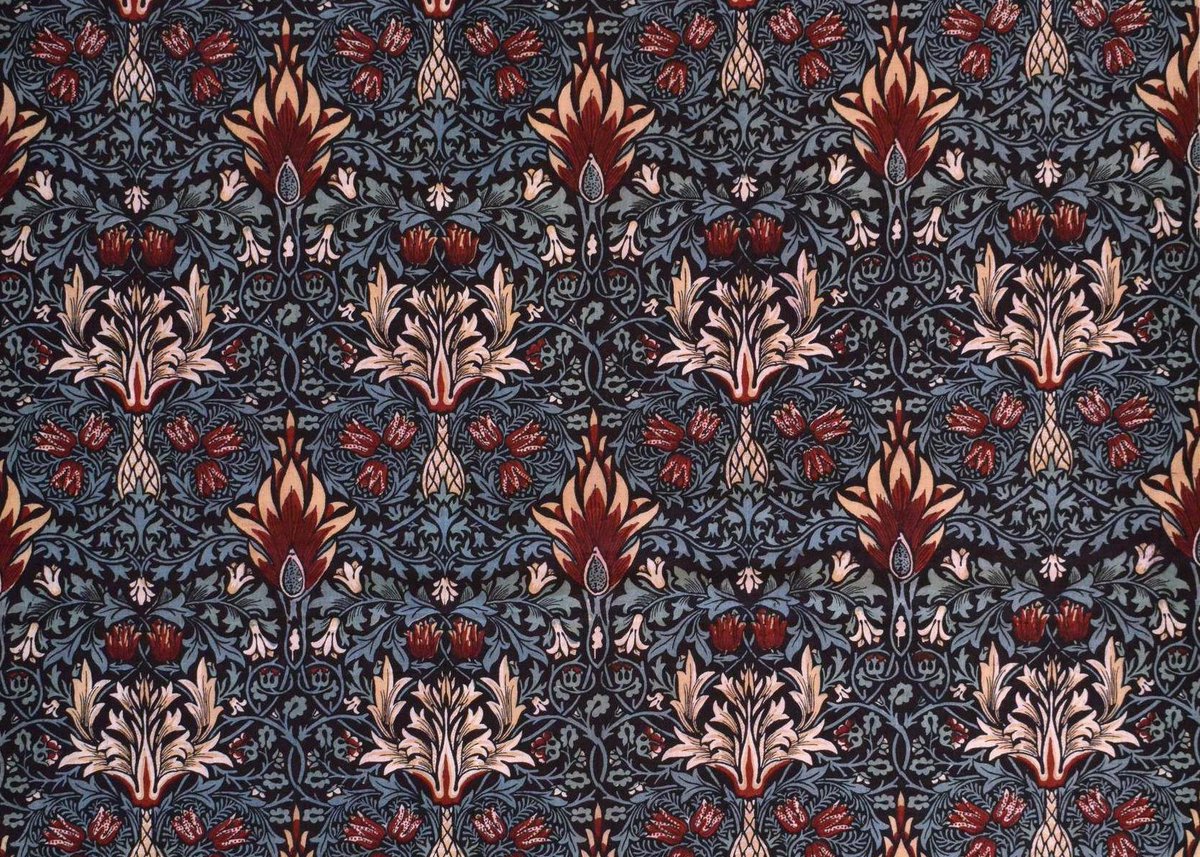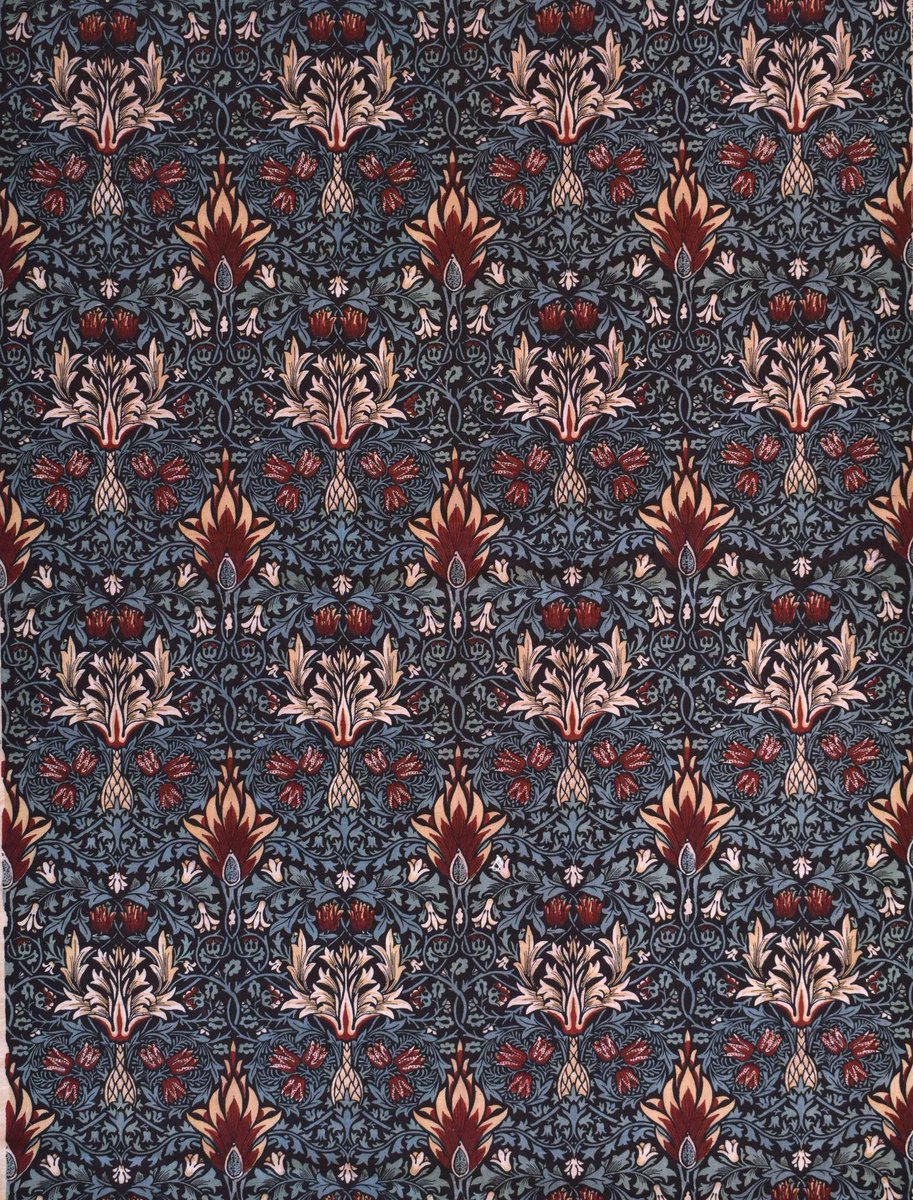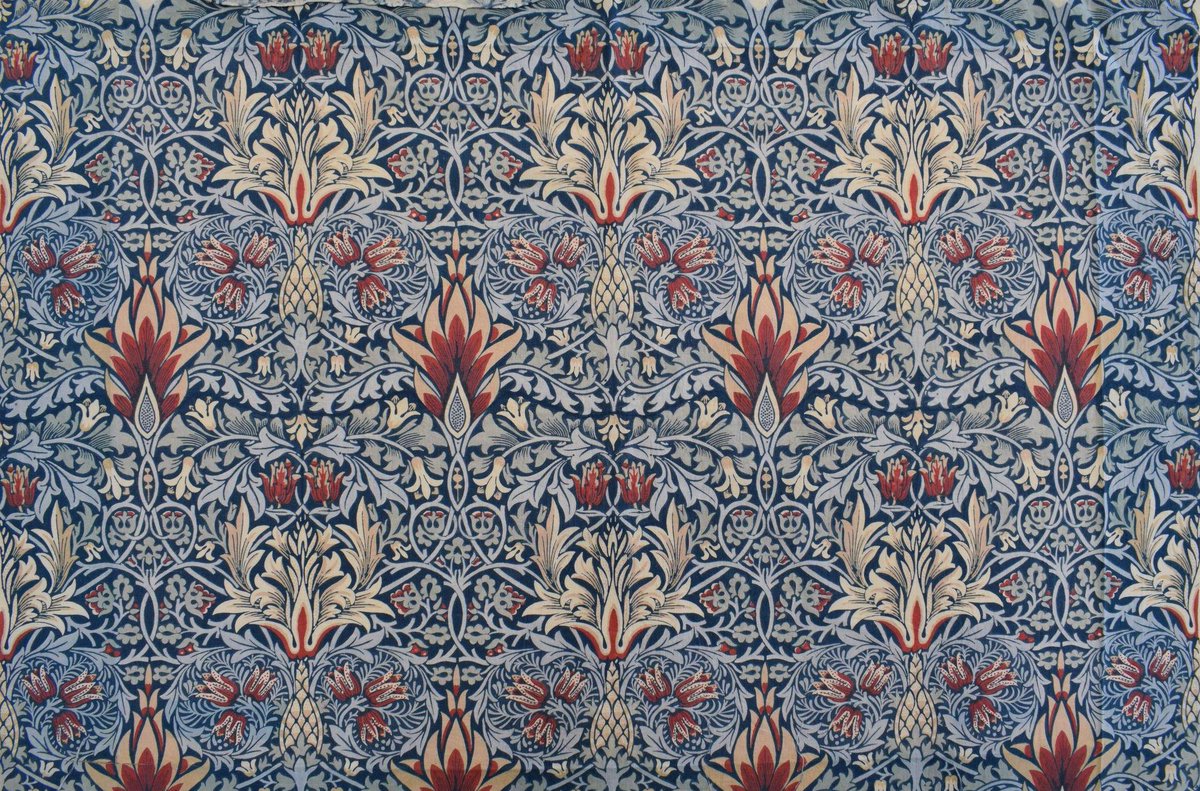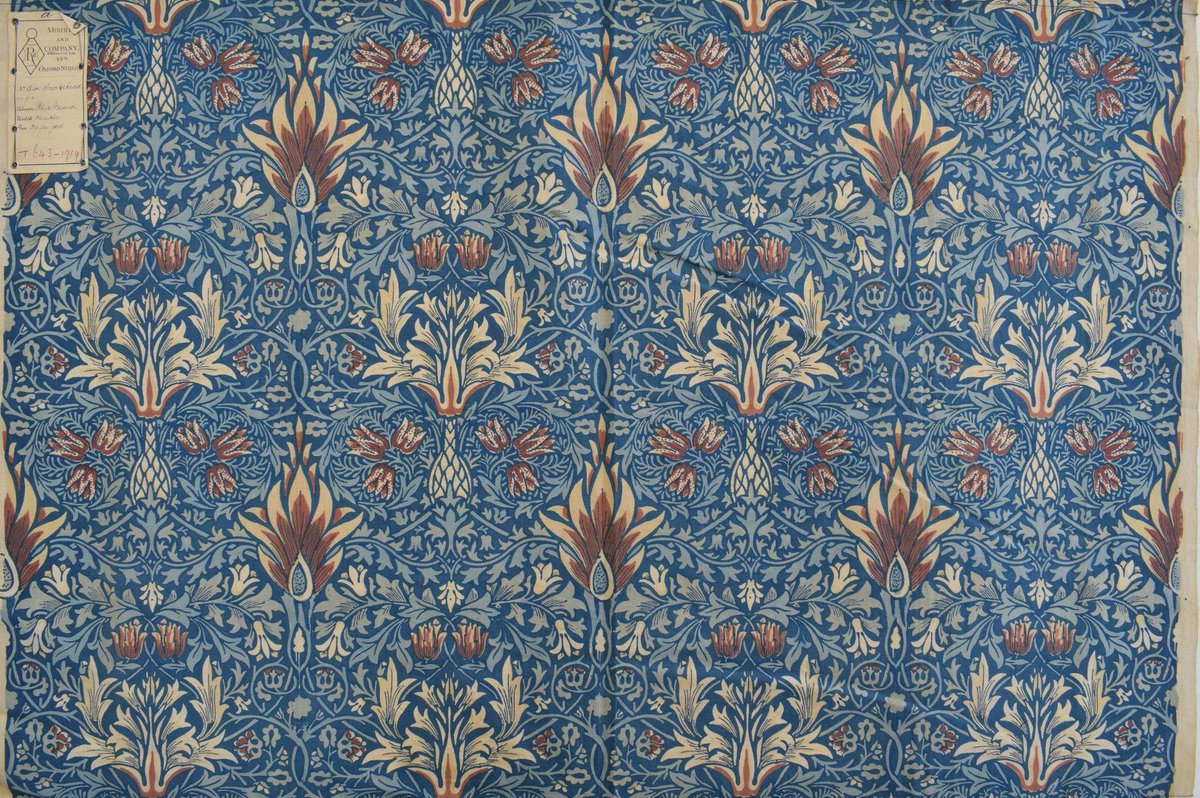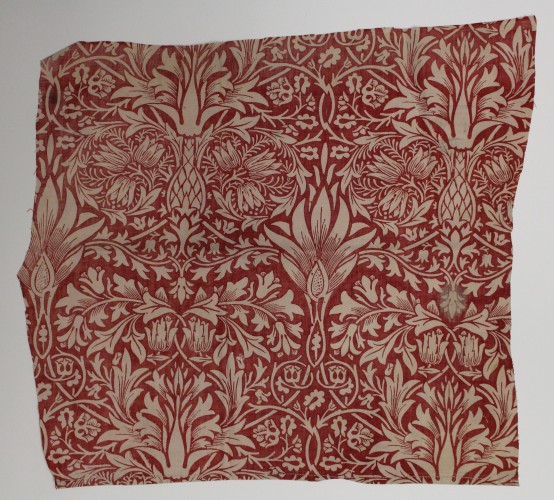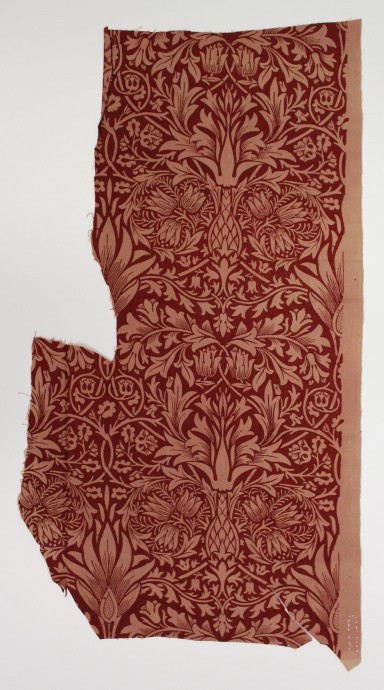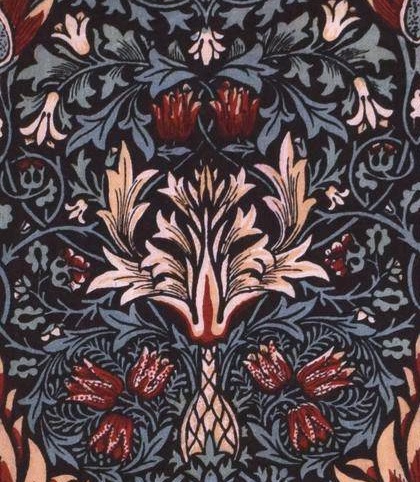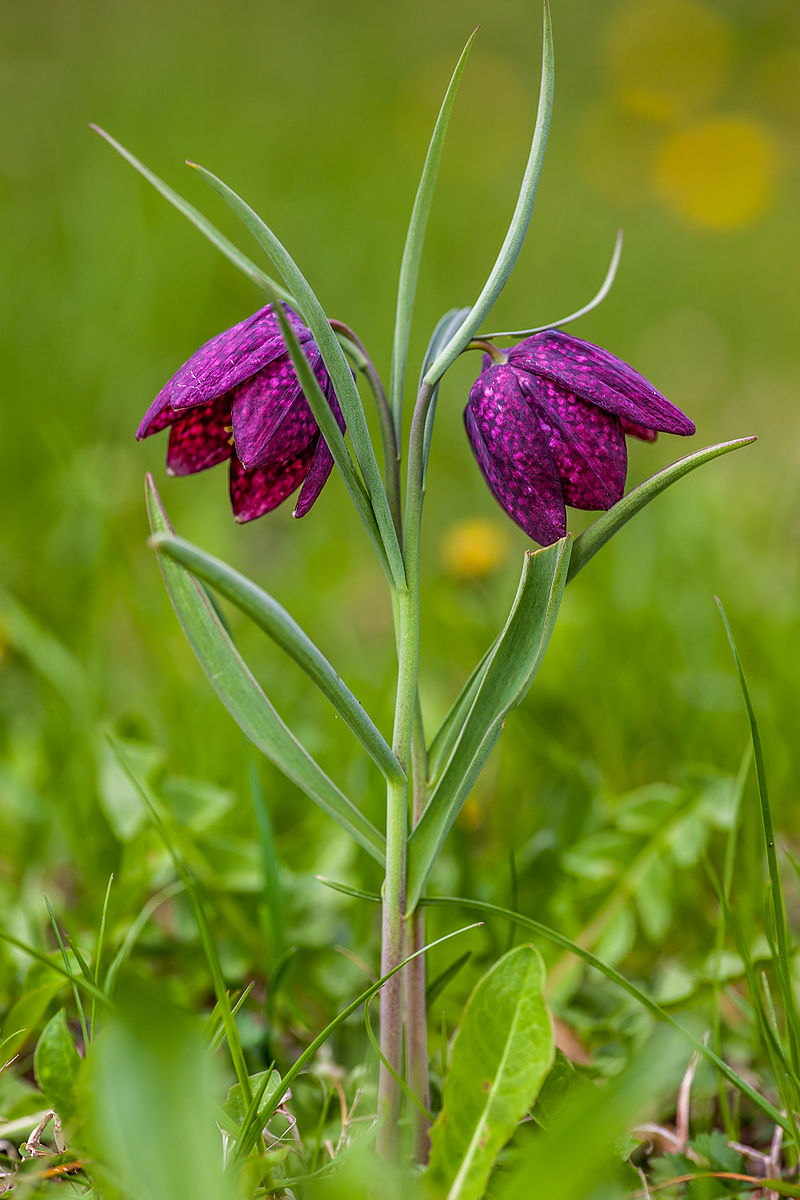Pattern 136: "Snakeshead", printed textile. William Morris, 1876.
Printed: Wardle (Leek) and possibly Merton Abbey
Image: V&A
Printed: Wardle (Leek) and possibly Merton Abbey
Image: V&A
1876 was a particularly productive year for Morris, and Snakeshead is an example of that year& #39;s highly symmetrical and highly detailed designs. Other examples include Bluebell and Little Chintz...
https://twitter.com/EveryMorris/status/1123358187132944384">https://twitter.com/EveryMorr... https://twitter.com/EveryMorris/status/1098992054959570944">https://twitter.com/EveryMorr...
https://twitter.com/EveryMorris/status/1123358187132944384">https://twitter.com/EveryMorr... https://twitter.com/EveryMorris/status/1098992054959570944">https://twitter.com/EveryMorr...
As well as the large-scale and even more elaborate African Marigold and Honeysuckle.
https://twitter.com/EveryMorris/status/1151940635542413313">https://twitter.com/EveryMorr... https://twitter.com/EveryMorris/status/1102625250016194562">https://twitter.com/EveryMorr...
https://twitter.com/EveryMorris/status/1151940635542413313">https://twitter.com/EveryMorr... https://twitter.com/EveryMorris/status/1102625250016194562">https://twitter.com/EveryMorr...
Snakeshead stands out, however, because of the density of its patterning and its relatively deep colors.
Its colors are in fact akin to those Morris used extensively at Merton Abbey starting in 1881 - deep blues, greens, reds, and yellows - as can also be seen in this slightly lighter printing.
(V&A)
(V&A)
Yet, unlike some earlier patterns, Snakeshead does not seem to have carried over to production at Merton Abbey during Morris& #39;s lifetime. Most samples are associated with the Wardle works, and it is absent from the Merton Abbey Dye Book.
This other sample from the V&A seems to date to around 1905, based on its labelling, so it may be a later Merton printing.
The pattern& #39;s coloring would seem to lend itself to the indigo discharge technique used at Merton Abbey, but all samples I have seen are surface-printed.
One of Morris& #39;s reasons for splitting with Wardle was his dissatisfaction with the quality of surface-printed blue patterns. At Merton, he was able to pursue indigo discharge for the first time. It& #39;s interesting that Snakeshead was not retained and converted to the process.
The William Morris Gallery holds two small samples of simpler red printings of the sample, but their dates and printing location are unclear.
The pattern is named for the snakeshead fritillary, a spring wildflower with distinctive checkered petals that grows in wet riverside meadows.
Morris loved snakeshead fritillaries and named two patterns for them - the other is the 1885 wallpaper Fritillary. https://twitter.com/EveryMorris/status/1108440252241403906">https://twitter.com/EveryMorr...
My ko-fi: http://ko-fi.com/smleonard
Object">https://ko-fi.com/smleonard... links:
V&A
Dark
http://collections.vam.ac.uk/item/O87499/snakeshead-furnishing-fabric-morris-william/
Lighter
https://collections.vam.ac.uk/item/O874... href=" http://collections.vam.ac.uk/item/O270985/snakeshead-furnishing-fabric-morris-william/
Lighter">https://collections.vam.ac.uk/item/O270... c. 1905
https://collections.vam.ac.uk/item/O270987/furnishing-fabric/
WMG
Red">https://collections.vam.ac.uk/item/O270... sample 1
https://www.wmgallery.org.uk/collection/search-the-collection-65/snakeshead-chintz-f443b-1876/
Red">https://www.wmgallery.org.uk/collectio... sample 2
https://www.wmgallery.org.uk/collection/search-the-collection-65/snakeshead-chintz-f443a-1876/">https://www.wmgallery.org.uk/collectio...
Object">https://ko-fi.com/smleonard... links:
V&A
Dark
http://collections.vam.ac.uk/item/O87499/snakeshead-furnishing-fabric-morris-william/
Lighter
Lighter">https://collections.vam.ac.uk/item/O270... c. 1905
https://collections.vam.ac.uk/item/O270987/furnishing-fabric/
WMG
Red">https://collections.vam.ac.uk/item/O270... sample 1
https://www.wmgallery.org.uk/collection/search-the-collection-65/snakeshead-chintz-f443b-1876/
Red">https://www.wmgallery.org.uk/collectio... sample 2
https://www.wmgallery.org.uk/collection/search-the-collection-65/snakeshead-chintz-f443a-1876/">https://www.wmgallery.org.uk/collectio...

 Read on Twitter
Read on Twitter